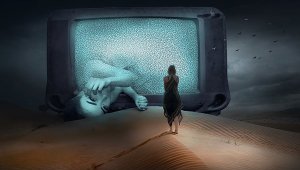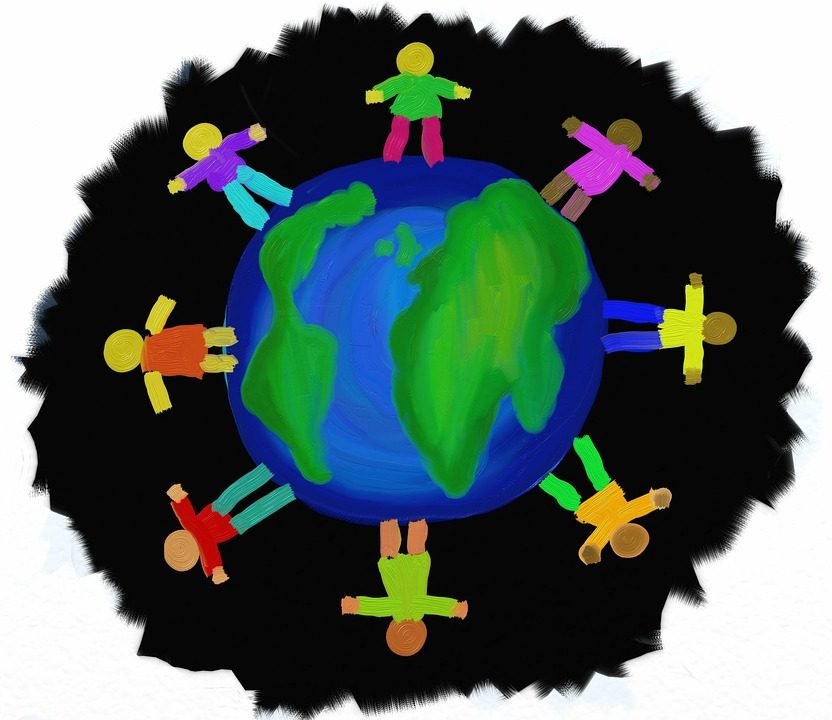The notion of ‘re-building’ community has been rattling around for some time, but what do we actually  mean by that? What is it that we mean when we talk about the ‘breakdown’ of community? Moreover, what are we going to do about it? If we can’t even define it, how are we ever going to re-build it?
mean by that? What is it that we mean when we talk about the ‘breakdown’ of community? Moreover, what are we going to do about it? If we can’t even define it, how are we ever going to re-build it?
For some, it is a nostalgic hark back to the days when your entire family lived under one roof, or down the road, or in the village. Or, when you could knock on your neighbour’s door and borrow some milk. Even in my lifetime, the hole in the neighbour’s fence meant that our parents could have between 1 and 4 children for tea each day, or, when we were slightly older, we’d roam from open door to open door between friend’s houses, build dens in the fields, and answer the village phone box telephone, and send one of our friends home for tea!
So, what is it that we mean exactly? And why is it so important right now?
Well, the ‘breakdown’ or as I prefer it ‘dis-connection’ of community doesn’t take a genius to figure out and that has been happening for a number of generations since industrialisation and the technological revolution that doesn’t seem to be slowing down any time soon.
People moved out of their immediate locations to find work, and now we can travel vast distances, quickly, by various modes of transport. Either that, or we can live anywhere, and be instantly connected to the other side of the world via the internet.
To keep this bit brief, basically, we are more dispersed, families live great distances from each other, both men and women go out to work leaving no one at home during the day, and we have all of our entertainment beamed to our front room via satellite. Community centres and pubs are closely every week, and the increasingly secular society no longer goes to church on a Sunday.
In effect, we can all live extremely isolated lives even in the family home, where each person is glued to their own screen, and never have to step outside our front door for shopping work, or entertainment.
 However, for all of its benefits and convenience, there is an enormous cost to this type of lifestyle. That is only just beginning to be noticed, even though the epidemic of loneliness and dis-connection are already well underway.
However, for all of its benefits and convenience, there is an enormous cost to this type of lifestyle. That is only just beginning to be noticed, even though the epidemic of loneliness and dis-connection are already well underway.
In short, loneliness has been found, in countless studies, to be the most harmful of all stressors. Stress has now been found to be at the root of nearly all physical and psychological health challenges (see Gabor Mate). I say ‘nearly’ only because the studies haven’t got around to them all yet.
Much of our stress is hidden and takes a bit of identifying. So, for example, if you are feeling depressed or you keep catching colds, would you have considered that your level of social contact or interaction could be the cause? Stress impacts our physiology by producing certain chemicals that out our body into survival mode.
Prolonged stress, from, for example, loneliness, will eventually impact our immune systems, brain function, mind, hormone production, and pretty much every other system in our body, because the stress hormones, are toxic and were not meant to be in continuous production. Hence, major illness, such as heart disease, autoimmune diseases, cancers, chronic conditions, and psychotic breakdown, can all be traced back to stress of one form or another. Including the stress of repressed and supressed emotions (which I’ve written about elsewhere).
So, what of loneliness then? Well, humans are pack animals. We rely on a social structure to survive and thrive. Connection between members of a community is akin to a nutrient to us and affects all five domains of our physical, emotional, psychological, social, and spiritual lives, all of which need to be in balance to both survive and thrive.
Take human connection, community, away and we are in grave peril.
peril.
In most western societies, we no longer have close families to take care of the elderly together; or strong male and female role models close at hand to show the next generation of men and women how to transition to the next stage of life (what we call ‘rites of passage’), or close knit communities to share the role of raising children and teach useful skills to the younger generations.
Imagine our ancestors and forebears. They would pull together as a community to support the bereaved, tend the sick, and care for those in the aftermath of tragedy. They understood, through community ritual and ceremony, how to grieve and honour the dead, and told stories to make sense of their world and life experiences. They understood the cycles of life and worked with the cycles of the planet, the seasons, the weather, to optimise their chances of survival and thrival. These natural phenomena were not deemed pathological, as they often are in our society, as grief becomes a time-consuming sickness that must be masked with pills, for example. I could go on with infinitesimal examples.
As we query and worry and hear figures of the increasing levels of mental ill health (another myth), heart disease, cancer, or the rise in this or that chronic condition, we desperately search for more and more quick fixes for our ‘ills’ and Big Pharma’s slick marketing campaign is very seductive, not least to the government officials whose salaries they pay (oh yes!).
 Community dis-connection is at the heart of the issue, and Community re-connection is the heart of the solution. Once we are re-connected, we can begin to handle the challenges posed and will see a major turnaround in the health of individuals, and hence, communities.
Community dis-connection is at the heart of the issue, and Community re-connection is the heart of the solution. Once we are re-connected, we can begin to handle the challenges posed and will see a major turnaround in the health of individuals, and hence, communities.
